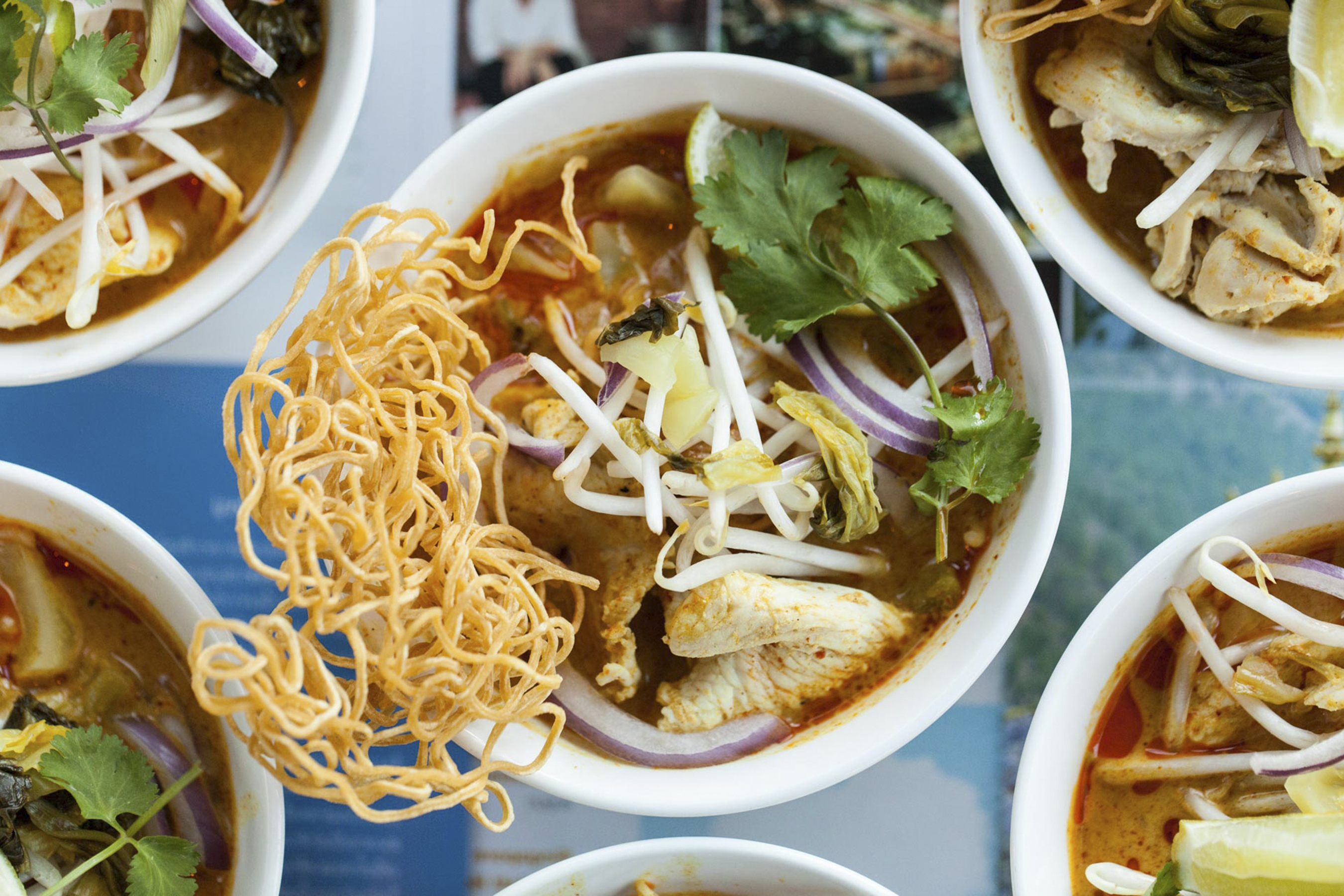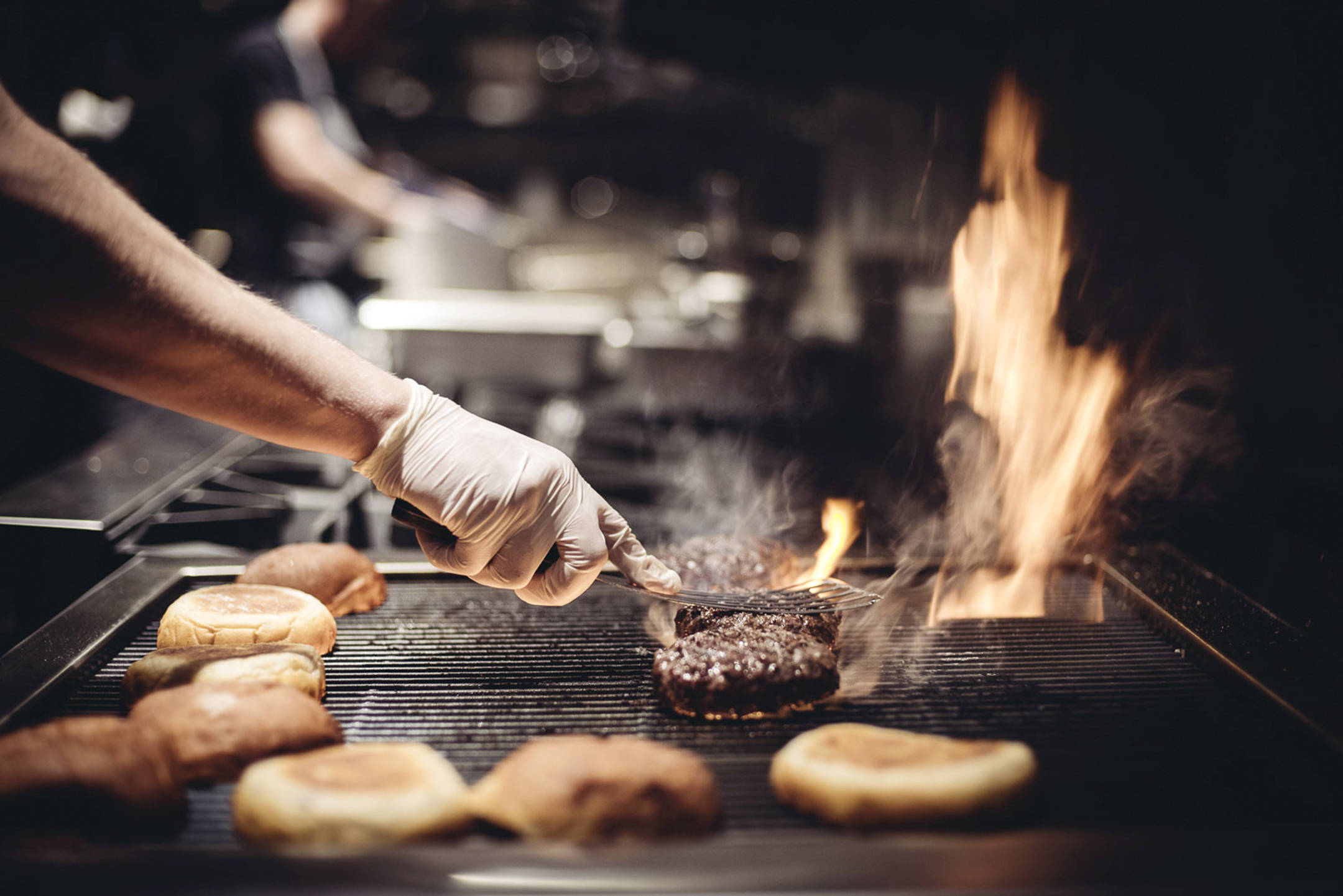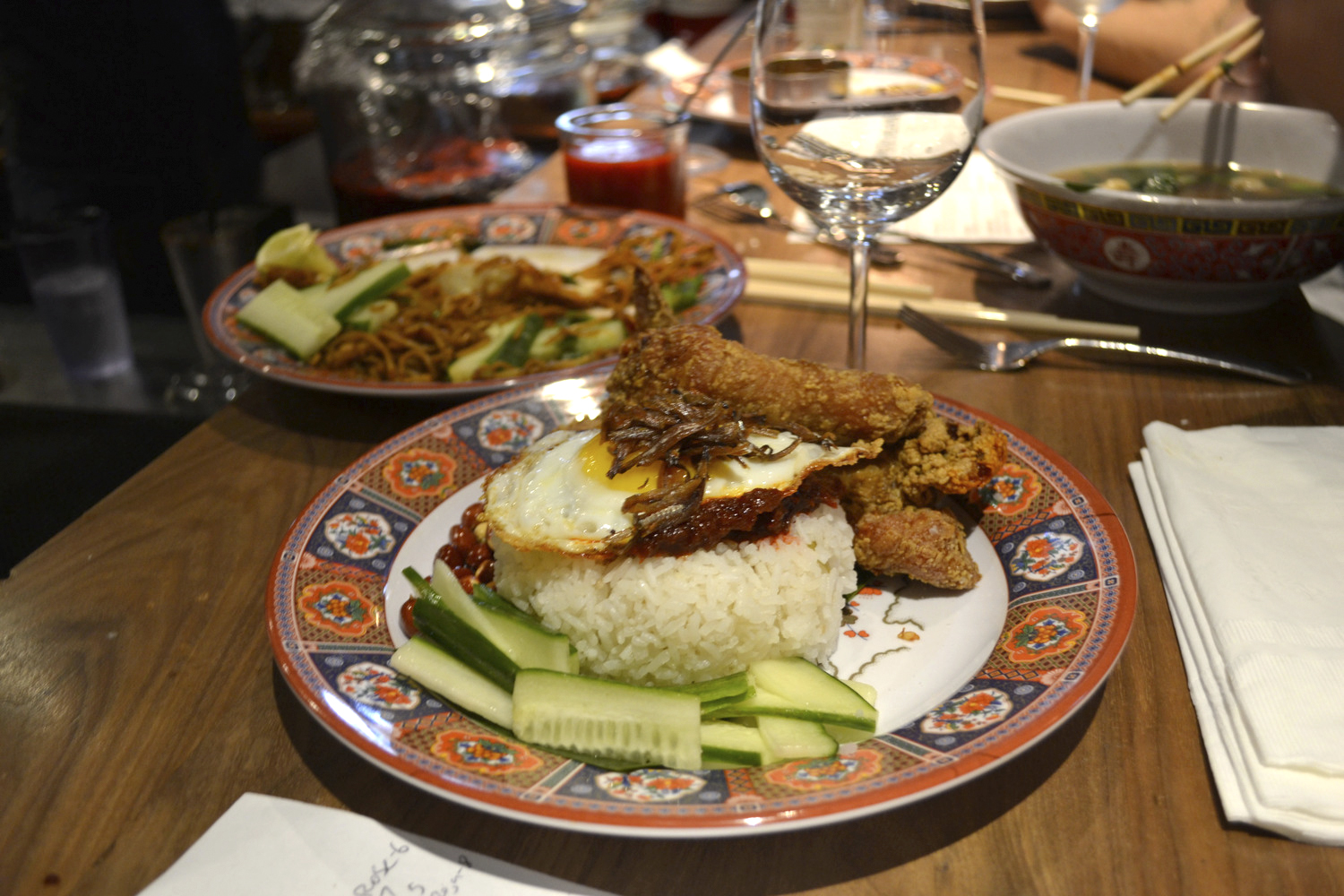I still remember the thrill that captured New York City diners in 1992 when lauded chef and restaurateur Jean-Georges Vongerichten opened Vong, a sexy, modern, upscale restaurant serving—shocker!—Thai cuisine. Flash forward to 2009 and, while that pioneer has since closed, it holds a place in culinary history for opening the floodgates for Thai restaurants everywhere, with offerings that cost far less and in spaces with far less flair. In the ’90s, no one could get enough of the spicy, fragrant food, and pad thai replaced chow mein as the Asian noodle dish of choice. Thai food, indeed, was the new Chinese, which now felt boring and unsophisticated in comparison.
Unfortunately, its proliferation has followed the pattern of Chinese and sushi restaurants: The food has become depressingly mediocre and foodies rarely seek it out—or admit to it, anyway. That’s why I was initially weary, but ultimately genuinely excited, to try out Soi on Capitol Hill.
The space on 10th Avenue and Union Street is massive, which alone distinguishes it from the smaller, hole-in-the-wall Thai spots we’ve grown used to. Featuring wood walls and tables, ceilings with wood beams, exposed ductwork, and concrete floors, the space resembles a brewery, minus the tanks. There are no corny Buddhas or other Southeast Asian tchotchkes. The food itself also aims—and succeeds—at changing your assumptions about Thai cuisine by focusing on the northeastern region of Issan, with flavors and dishes more similar to those of the bordering countries of Cambodia and Laos. Think sticky rice instead of jasmine rice, sausages, and egg noodles. Forget about Bangkok-style staples like pad thai, red curry, or pad se ew.
The restaurant makes no apologies for the omissions, instead proclaiming that “Soi is a return to Thailand—a departure from your normal expectations of Thai food in Seattle. . . . Food in Thailand varies greatly from region to region, and we will take you on an exploration through these regions to let you know what it’s really like to eat there . . . The food from Issan can be funky, pungent, and more fragrant than you may be used to, but it’s because we do it ‘bo lan’—the original way.”
Indeed the soi sai uah was an unexpected treat—a northern-style curry sausage cut into eight oval pieces; stuffed with chili, shallots, kaffir lime leaf, and lemongrass; and served with fresh ginger and Thai bird chilies. The lemongrass and lime leaf are the predominant flavors, and their infusion brings brightness to an otherwise heavy sausage dish. Though it’s an $11 appetizer, I’d easily and happily make a meal out of it.
Another appetizer, jumbo chicken wings, are first deep-fried and then stir-fried with garlic, chili paste, and fish sauce, resulting in bold flavor without being too salty or sweet, as is the case with many chicken wings I’ve recently had at new Asian restaurants around town. There are only three, but each is big enough to tear apart for two—again, a steal at $12. Vegetables here are lovely and cooked exactly as you’d get them in Thailand. I went for the fresh morning glory (also known as Chinese spinach), stir-fried with smashed garlic, fresh chilies, and fermented black-bean sauce. The bright-green, hollow, tubular stems and flat leaves are braised beautifully, allowing for a bit of crunch, and the sauce that pools beneath them is redolent of the garlic and black bean. For $8, you get a huge plate of them, perfect for sharing with a group.
Larger entrees are on point too. Small chunks of pork collar are rubbed with coriander root, garlic, and pepper, glazed with soy sauce and palm sugar, then grilled and topped with a garlic-cilantro-lime sauce that brings the heat up considerably. It has the fire of authentic Thai food, while allowing the rest of the ingredients their due—a subtle balancing act that many Thai restaurants in the U.S. don’t achieve.
Likewise, from the “specialties” section of the menu, the northern-style noodle curry manages to carry a heft of flavors along with heat. Tender egg noodles sit atop a thick broth of coconut milk with cumin, turmeric, shallot, galangal, and lemongrass as well as a cut-up chicken thigh (mix it all up yourself). To bring some lightness and crunch, the dish is topped with a bundle of bean sprouts, pickled cabbage, and sliced shallots. Your palate registers the sweetness of the coconut milk first, but is quickly restrained by the herbal notes of the galangal and lemongrass. Eat this and you may never order the typically treacly pad thai again.
In the past year, Korean and Vietnamese food has reigned, and we’ve also begun to see introductions to regional takes on Chinese cuisine. If Soi is any indication, Thai food may be the Asian food revival of 2016. Its time is certainly due.
food@seattleweekly.com








